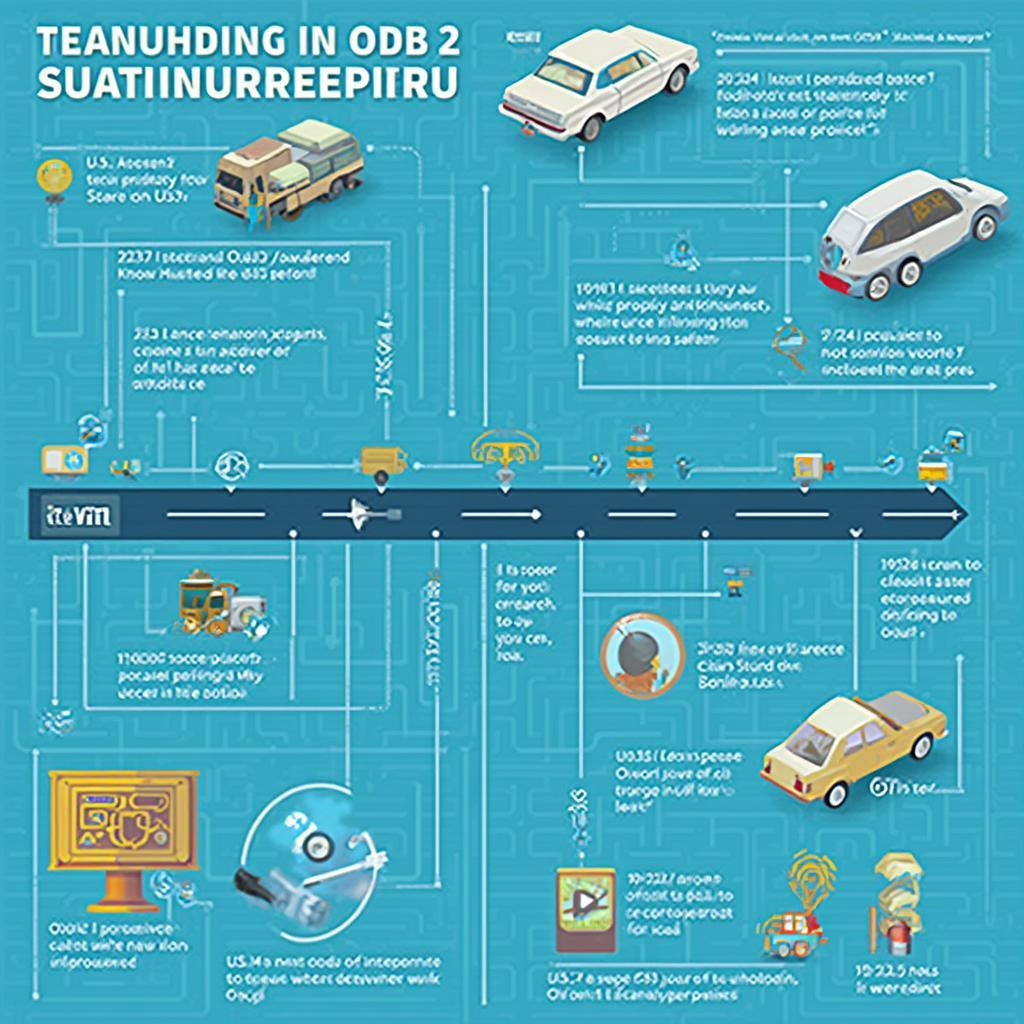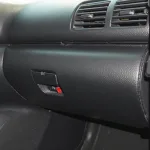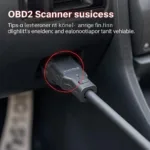OBD2, or On-Board Diagnostics II, has become an essential tool for vehicle owners and mechanics alike. But when was this now ubiquitous system standardized? This article delves into the history and standardization of OBD2, exploring its evolution, impact, and the answer to the frequently asked question: “when was the OBD2 standardized?”.
The rollout of OBD2 wasn’t an overnight phenomenon but rather a phased approach. In 1996, OBD2 became mandatory for all new light-duty vehicles sold in the United States. This marked a significant shift in the automotive industry, paving the way for easier diagnostics and emissions control. This standardization didn’t happen in a vacuum. It was built on earlier iterations of on-board diagnostics and driven by the need for cleaner air. The story of OBD2 is one of continuous improvement, driven by both environmental concerns and advancements in technology. Want to learn more about the Nissan R34’s OBD2 system? Check out our guide on r34 obd2.
The History Leading up to OBD2 Standardization
Before OBD2, there were earlier versions of on-board diagnostics, each with its own set of limitations. OBD-I, for example, lacked standardization, making it difficult for mechanics to diagnose issues across different vehicle makes and models. The push for a standardized system came from the California Air Resources Board (CARB), which recognized the need for a consistent way to monitor and control vehicle emissions.
Why Was OBD2 Standardization Necessary?
The standardization of OBD2 was crucial for several reasons:
- Improved Emissions Control: OBD2 allows for continuous monitoring of emissions-related components, ensuring they function correctly and minimizing pollution.
- Simplified Diagnostics: With a standardized connector and protocol, mechanics can easily access diagnostic trouble codes (DTCs) across different vehicle makes and models.
- Empowered Vehicle Owners: OBD2 empowers vehicle owners to perform basic diagnostics themselves, potentially saving time and money.
 OBD2 Standardization Timeline
OBD2 Standardization Timeline
OBD2 Standardization Across the Globe
While OBD2 started in the US, its impact has been global. Many countries have adopted OBD2 or variations of it, contributing to worldwide efforts to reduce vehicle emissions. This global adoption has further solidified OBD2 as the standard for vehicle diagnostics. Are you looking for the OBD2 port location on your 1995 Miata? We have a guide for that: 1995 miata obd2 location.
When did Europe adopt OBD2?
European countries adopted a variation known as EOBD, which is largely compatible with OBD2. EOBD followed a similar timeline, with implementation beginning in the late 1990s and early 2000s.
How OBD2 Works
OBD2 works by monitoring various sensors and components throughout the vehicle. When a malfunction is detected, a diagnostic trouble code (DTC) is stored in the vehicle’s computer. This DTC can then be retrieved using an OBD2 scanner, providing valuable information about the nature of the problem. Need to find the OBD2 port on your 2000 Mitsubishi Galant ES? Check out our guide: 2000 mitsubishi galant es obd2 port.
What information can an OBD2 scanner provide?
OBD2 scanners can provide a wealth of information, including:
- Diagnostic Trouble Codes (DTCs)
- Freeze Frame Data
- Live Sensor Data
- Vehicle Identification Number (VIN)
- Emissions Readiness Status
“OBD2 has revolutionized the way we diagnose and repair vehicles,” says automotive expert, Dr. Emily Carter, “It has empowered both mechanics and vehicle owners, leading to more efficient repairs and reduced emissions.”
The Future of OBD2
OBD2 continues to evolve, with ongoing developments in technology and emissions regulations. The future of OBD2 likely involves greater integration with vehicle telematics and cloud-based diagnostics. Want to know more about the Eurovan’s OBD2 connector? See our guide on eurovan obd2 conector.
What are the future trends in OBD2 technology?
Some of the future trends in OBD2 technology include:
- Wireless OBD2 scanners
- Cloud-based diagnostics
- Integration with smart vehicles and IoT devices
“The future of OBD2 is exciting,” adds Dr. Carter. “As vehicles become more connected, OBD2 will play a crucial role in providing valuable data for both diagnostics and vehicle management.”
In conclusion, OBD2 was standardized in 1996 for US vehicles, marking a crucial step in vehicle diagnostics and emissions control. This standardization has had a global impact, contributing to cleaner air and easier vehicle maintenance. Looking for the factory manual for your 2013 Mercedes GLK350 OBD2 system? Visit factory manual mercedes glk350 2013 obd2.
Need help with OBD2? Contact us via WhatsApp: +1(641)206-8880, Email: [email protected] or visit us at 789 Elm Street, San Francisco, CA 94102, USA. We have a 24/7 customer support team ready to assist you.

